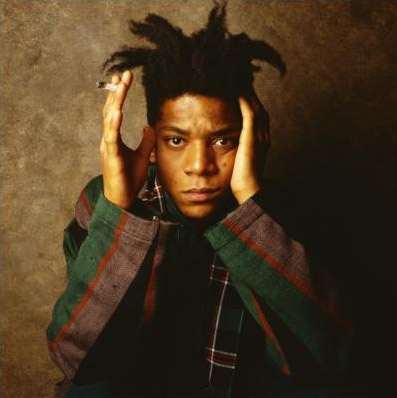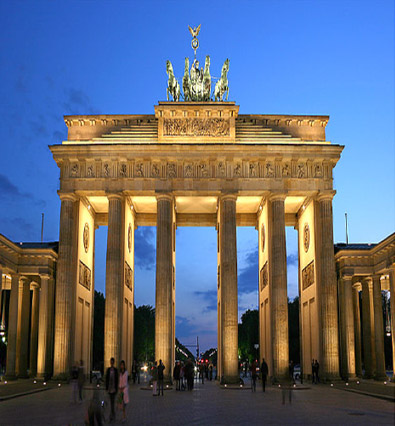The Postmodern era begins around the end of World War II, in 1945, and The Vietnam War: The Cold War, ‘55-’75. In the USA political and racial turmoil contribute to the reasons why Martin Luther King, President John F. Kennedy, and his brother Senator Robert F. Kennedy are assassinated. People learn to exchange naivety for harsh reality. Postmodern painting reflects trained artists’ responses. No longer dependent upon classical teachings, some artists begin to incorporate image-based commercial products and services. This collection of paintings illustrates the unleashing of artistic freedom.
Jean-Michel Basquiat (1960 – 1988) English, French, and Spanish are spoken, in his Brooklyn, NY home, by his Haitian father and Puerto Rican mother. Jean-Michel’s talent is supported from childhood with art classes. As young teenagers, Basquiat and his friend Al Diaz are midnight muralists. They spray-paint cryptic aphorisms on the sides of subway trains. Diaz wears the cap with a Z.
The bright, restless scamp of a kid quits high school short of graduating, leaves home, finds places to crash in lower Manhattan, and continues to spray-paint graffiti art on slum buildings with Al. They attract attention near the School of Visual Arts with their art and nickname. © signature SAMO. (Same Old S---) is a reference to the marijuana they smoke.
In December 1978, The Village Voice publishes an article about the writings. Long-held differences between Basquiat and Diaz come to a head as Jean-Michel’s paintings take off. The collaborators retire. SAMO IS DEAD appears on the walls of SoHo buildings. Photo of their “Street Art.”
Exhibits in Europe, Africa, and the Biennial at the Whitney Museum of American Art, in NY are highlights in a career lasting a brief decade because of a tragic, heroin overdose. This is one of many Basquiat/ Warhol collaborations.

Postmodern era. Neo-Expressionist, Figurative movement (1970s – 1980s) The story behind what many call “the four most important words of Ronald Reagan’s Presidency,” are spoken at the Brandenburg Gate in Reagan’s Berlin Wall Speech – June 12, 1987.
At the end of the decade, traditional communism collapses and the cold war dissolves. Political and cultural conservatism is on the rise.
Artists spray-paint showy and crudely drawn, random, graffiti messages on public surfaces during the 70s, asserting the new Expressionist movement. By the 80s their messages become structured paintings on canvas.
One of the most entertaining American movies, relating to teen-agers, is released in 1986 featuring actor Matthew Broderick as Ferris Buller, in Ferris Buller’s Day Off. PG-13.
A Jean-Michel Basquiat painting sells for $110.5 million dollars, by Sotheby’s auction house, May 18, 2017. The new owner is a forty-four-year-old Japanese art collector. View the painting, Untitled.

Go on to Describe, Analyze, Interpret & Conclude. Contact me for help.
Hollywood Africans (1983. Synthetic polymer, oil paint sticks, and mixed media on canvas. 84 x 84 in. (213 x 213 cm.) Basquiat is known for aggressive flat painting. Edgy, sociopolitical themes span the entire picture plane in a unique painterly style.
His hand deftly brushes across the canvas making marks viewers love to decipher. Many symbols belong to his private world, though some are recognizable Hollywood images.
The letter “Z” on the cap of the face in the center is for “Diaz,” his buddy. This painting is barely finished when it is shown in the prestigious 1984 Whitney Museum of American Art Biennial exhibit, in New York.
For the bragging rights of having purchased smartly, the wealthy scramble to buy the paintings that ridicule them for $200,000 dollars. Basquiat is cool and collected, knowing all the while his youthful expectations of fame were on the mark. Proof positive - his first gallery exhibition is a sellout.
Jean-Michel credits Robert Farris Thompson, the author of Flash of the Spirit: African & Afro-American Art & Philosophy, as the person who understands my work best. Thompson says of Basquiat, “He had a special talent to take all the street energies and translate them into high art.”